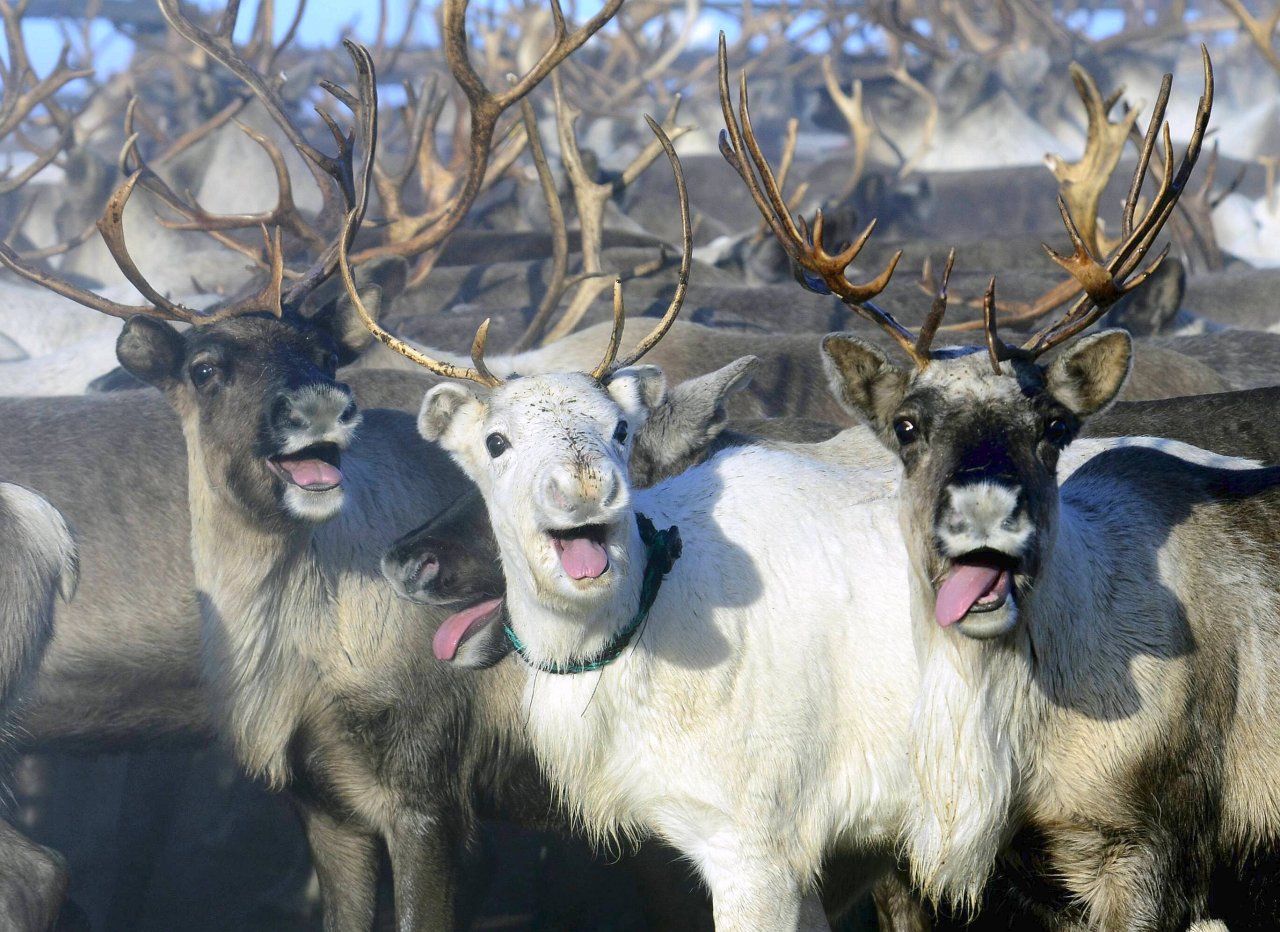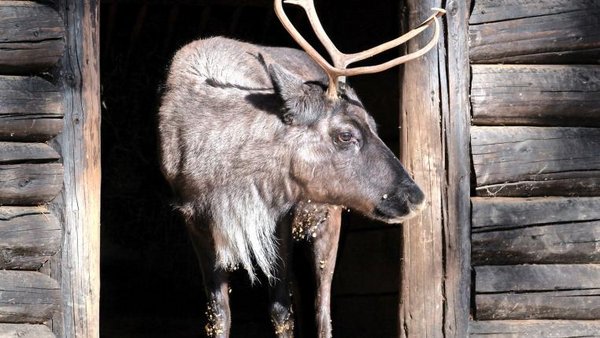...Finally another thought that struck me as a Botanist. What if the reindeer actually are grazing indicriminately on both rare plant, fungi and lichen in this area that the local environmentalists and the Swedish Nature Protection Agency claim are extremely worthy of protection?
That would be a very paradoxical situation pitting the over grazing greedy reindeer and their overlords versus the local environmentalist concerned with protecting fragile flora and fungi against the threats from the ill effects of both mining AND industrial agriculture, in this case reindeer slaughtered for their meat.
My solution, to resolve this brewing dispute. Ban reindeer from this area year around, in the process removing Talma and their overlords out of the dispute and for Talga to keep up the dialogue with the local concerned greenies to protect the very valuable Smaller Liverwort and Narrow footed Tooth fungi. Trust me. I kid you not.



I immediately thought of your words. As a botanist, you're absolutely right and reindeer really do like to eat mushrooms. I didn't question that but thought it was kind of strange as I thought animals should be aware of poisons in their food. And indeed, reindeer have a preference for fly agaric

for whatever reason. And now comes this. Have a read and enjoy, I had to laugh so much. Learnt something again and from now on I see reindeer with different eyes

Translation from German:
"Stoned reindeer, stoned dolphins: animals in a frenzy
Hedgehogs have an alcohol problem, kangaroos enjoy themselves in opium poppy fields: The use of intoxicants in the animal kingdom is astonishing.
It's not just humans who use the intoxicating effects of alcohol and narcotics to escape from everyday life. Representatives of certain animal species also regularly indulge in a large gulp of high-proof spirits or consciously resort to hard drugs such as opiates. "There are animals that smoke pot and animals that get high," says Karlsruhe biologist Mario Ludwig. The scientist has specialised in the popular scientific analysis of bizarre and previously little-known phenomena from the animal kingdom and has published more than 20 books on the subject.
According to Ludwig, reindeer love to eat fly agaric. Because the mushrooms contain mind-expanding substances, the reindeer begin to sway after eating them. Drugs are also popular with some animals in Tasmania, Australia. According to Ludwig, kangaroos often deliberately enter opium poppy fields, eat poppy capsules and then run around in circles intoxicated by the morphine they contain.
Dolphins use pufferfish as a joint
According to the findings of the 58-year-old scientist, however, a particularly curious type of self-intoxication is practised by a special species of dolphin. "The bottlenose dolphin takes another animal as a drug, namely the puffer fish," says Ludwig. Pufferfish contain a high concentration of the neurotoxin tetrodotoxin and secrete it under stress. Once, several bottlenose dolphins were even filmed maltreating a pufferfish, letting it go round "like a joint" and getting high on its poison. "Surprisingly, only young male dolphins do this," explains Ludwig.
The consumption of alcohol in the form of fermented berries is also common in the animal kingdom, says the PhD scientist. Scenes such as those in Astrid Lindgren's children's book "Michel from Lönneberga", where pets stagger around the yard drunk after eating spoilt cherries, are by no means fiction, but are also possible in reality.
Hedgehogs in the UK have an alcohol problem
According to the researcher, hedgehogs in the UK have a "massive alcohol problem". The reason for this are the many so-called beer traps that English hobby gardeners use to protect their flower and vegetable beds. The cups filled with beer are actually only intended to attract slugs. However, as slugs are the favourite food of hedgehogs, they regularly feast on the containers with the beer mix. Not a safe endeavour, says Ludwig, "because afterwards the hedgehogs are stinking drunk and sleep it off in the corner of the garden, quite unprotected".
The guenons on the Caribbean island of St Kitts are even more direct and unafraid of humans, says the expert. "They drink the tourists' cocktails and lie drunk on the beach in the afternoon."
The biologist says that his research into animal drug abuse is not yet enough for an entire book: "Drug research in animals is still in its infancy." However, the science author has already started his next projects: He is planning a book on "The most bizarre animal species" as well as a volume on the different communication channels in the animal kingdom."
Zugedröhnte Rentiere, bekiffte Delfine: Tiere im Rausch

www.derwesten.de
but wait

it's getting even
better:
from Switzerland
"Flying high thanks to reindeer urine
The fact that reindeer pull Santa's sleigh has to do with toadstools. These, in turn, must first find their way through a reindeer.
Especially in Anglo-Saxon culture, reindeer are inextricably linked to Christmas. They pull Santa Claus' sleigh, which sets off from the North Pole on Christmas Eve. This Santa Claus has nothing to do with our "Santa Claus", but the idea of Santa Claus on a reindeer sleigh has become more and more popular in recent years. Rudi, the reindeer, knows every child by now. The figure of Santa Claus was supposedly invented in 1829 by the American Clement Moore in a poem. The reindeer sleigh was not depicted in a drawing in Harper's Magazine until 1868. Originally, eight reindeer pulled the sleigh – each with its own name. Rudolf "Rudi" was one of them.
Within a century, the reindeer became what the hare is to Easter. The fact that Santa Claus lives with his reindeer in Lapland goes back to a story that the Finnish radio presenter Markus Rautio told his listeners in 1927. As a result, a hiker met Santa Claus on a cold winter night at the foot of Mount Korvatunturi (in German: Ohrenberg). He explained to him that he lived and worked with his reindeer, elves and gnomes in this mountain, which was shaped like an ear so that he could hear and fulfill the wishes of all children around the world. As more and more people made pilgrimages to Finnish Lapland to search for Santa Claus on the mountain, Rovaniemi, a good 250 kilometres to the southwest, was unceremoniously named Santa Claus' second home at the end of the Second World War.
Why reindeer, of all people, pull Santa's sleigh can be explained by his name. Joulupukki is called Santa Claus in Finland. Joulu refers to the Nordic Christmas (Yule) and this has always been associated with the reindeer. Like other parts of the Christmas traditions, it was only later associated with the Christian festival.
Contact with the reindeer spirit
The ancient Yule festival originally had a completely different meaning: Siberian peoples worshipped the so-called Great Reindeer Spirit. In 1658, a Polish prisoner of war brought the news of this custom to Europe for the first time. He reported that during Yule, December 21, the shortest and darkest day of the year, shamans would become intoxicated with the poison of toadstools. This allowed them to make contact with the Great Reindeer Spirit.
Finding the right dosage for the fly agaric decoction was not easy. Too high a concentration of the poison can even lead to death. The solution came from the reindeer, which like to eat these mushrooms. How they manage not to poison themselves in the process is still their secret. However, what they then utter contains the right dose that is harmless to humans for the desired state of intoxication: urine. When drunk, it gave people the feeling of flying. The name fly mushroom refers to this and the red and white clothing of Santa Claus also has its origin here. Maybe even the red nose of reindeer Rudi has something to do with it. "
Dass Rentiere den Schlitten des Weihnachtsmannes ziehen, hat mit Fliegenpilzen zu tun. Diese wiederum müssen zuerst den Weg durch ein Rentier finden.

www.tierwelt.ch
That's interesting and funny at the same time, isn't it? Have a nice weekend! 
______________
And yes, I have also read about how the greedy reindeer sometimes eat the forests bare and also strip the bark from trees. Presumably the reason for the regulation that each municipality is only allowed to keep a certain amount. The other article about the penalty imposed because of the greed for more.
Musk wants to expand a railway terminal to increase transport capacity by rail. Left-wing extremists and environmentalists are against this and vice versa practical in favour of more transport on the motorway with ICE trucks. They have therefore carried out an arson attack on the power line, a black out for Tesla, who are building climate-damaging EVs, and parts of Berlin. Next door, they are occupying a monoculture of pine trees to prevent Tesla from producing more EVs and using environmentally friendly rail transport.


 www.talga.com.au
www.talga.com.au

84thand3rd.com
While the act of barbequing is a very Australian activity, BBQ sauce generally comes from a plastic bottle… yikes. This Aussie twist uses a pinch of Vegemite for a savory, salty kick – and the most Aussie of all fruits, the mango, for sweetness. Australia, meet BBQ sauce, I think you’ll get along just fine.

 thestockexchange.com.au
thestockexchange.com.au

 thestockexchange.com.au
thestockexchange.com.au

